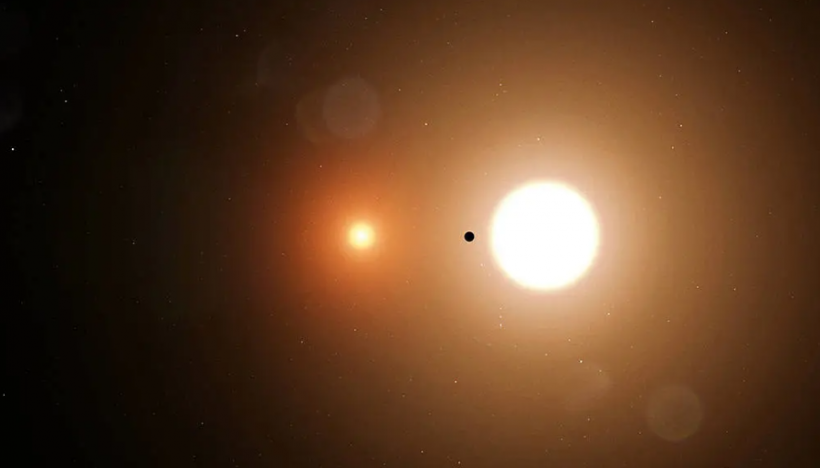A team of astronomers led by Chinese researchers has identified the smallest star ever discovered, nestled within an extraordinary binary system.
This remarkable discovery offers fresh information on the mysteries of the evolution of stars,

Astronomers discover the smallest star, TMTS J0526B, in a binary system, challenging theories, confirming predictions, and offering insights into star evolution mysteries.
Smallest Star Ever Detected
The star, TMTS J0526B, is a hot subdwarf that is only seven times the size of Earth, making it smaller than Saturn. This small stellar body, located approximately 2,760 light years away from Earth, captivates scientists with its extraordinary properties.
A study defines hot subdwarf stars as core helium-burning stars at the blue end of the horizontal branch or they have evolved beyond that stage. They are found in all Galactic stellar populations and are common enough to explain the UV-upturn observed in early-type galaxies.
Powered by helium burning at a scorching surface temperature of 2,500 Kelvin (2,226.85 degrees Celsius (4,040.33 Fahrenheit), TMTS J0526B orbits a larger, unseen white dwarf companion, J0526A, every 20 minutes.
While J0526A is invisible to telescopes, its presence is determined by the gravitational tug it exerts on its smaller companion, which deforms it into an egg-shaped structure.
According to a 2017 study led by University of Cambridge researchers, the smallest red dwarf ever measured was EBLM J0555-57Ab, which is 600 light years away.
Read Also: NASA Telescopes Capture a Dead Star Releasing a Burst of Radio Waves
Confirming Previously Held Theories
This discovery, published in Nature Astronomy, is especially significant because it confirms a theory proposed by Chinese astronomers two decades ago that predicted the existence of such minuscule stars in binary systems. The confirmation of this theory provides a glimpse into the mechanisms driving star formation and evolution in our universe.
The breakthrough was made possible by the Tsinghua University-Ma Huateng Telescope for Survey (TMTS), a cutting-edge instrument designed to search the skies for moving objects.
Since its inception in 2019, TMTS has given astronomers unprecedented access to the cosmos, allowing them to discover celestial wonders such as TMTS J0526B.
Following the initial discovery, the research team made additional observations with larger telescopes, such as Hawaii's Keck-I telescope and Spain's Gran Telescopio Canarias.
These observations not only confirmed the binary system's existence but also demonstrated its ability to emit gravitational waves. This phenomenon could be detected by next-generation space-based observatories currently in development.
The discovery of TMTS J0526B challenges conventional understanding of the size and nature of stars, pushing the limits of our understanding of the universe. Previously, red dwarfs were considered the smallest stars, but TMTS J0526B dwarfs even these celestial dwarfs.
This finding emphasizes the significance of ongoing astronomical research and innovation. As humanity explores the vast expanse of space, each discovery brings us closer to solving the universe's mysteries.
Stay posted here at Tech Times.
Related Article: NASA Launches New Mission to Study Ultraviolet Sky, Stars, and Stellar Explosions









